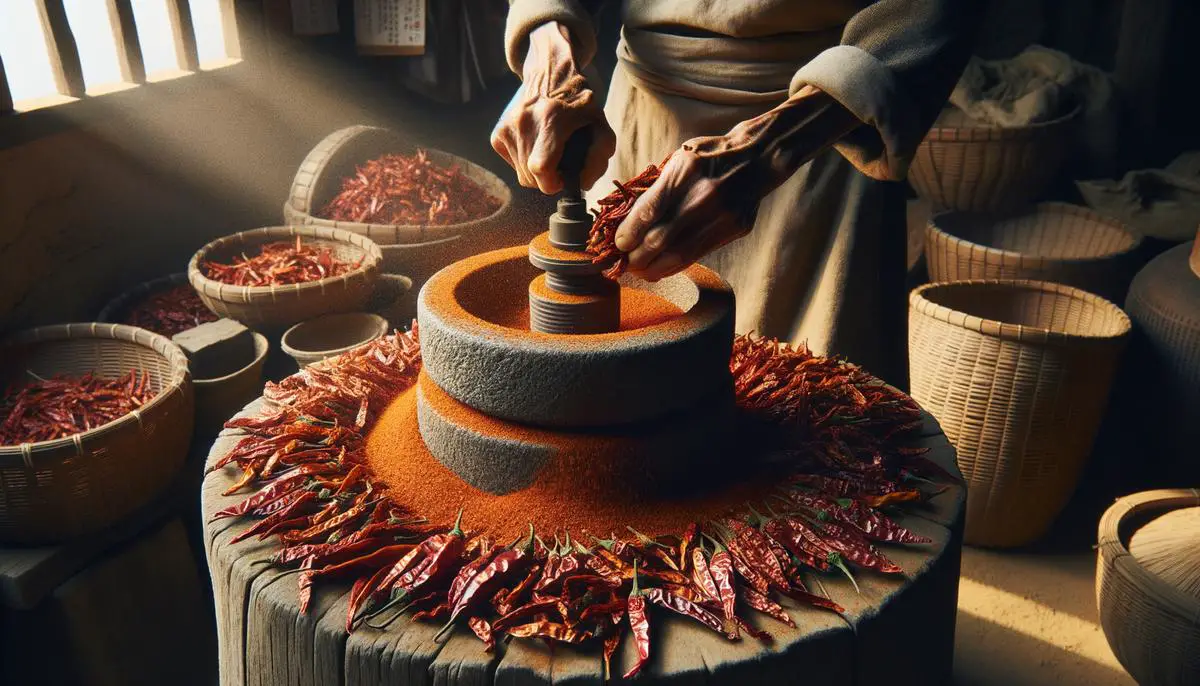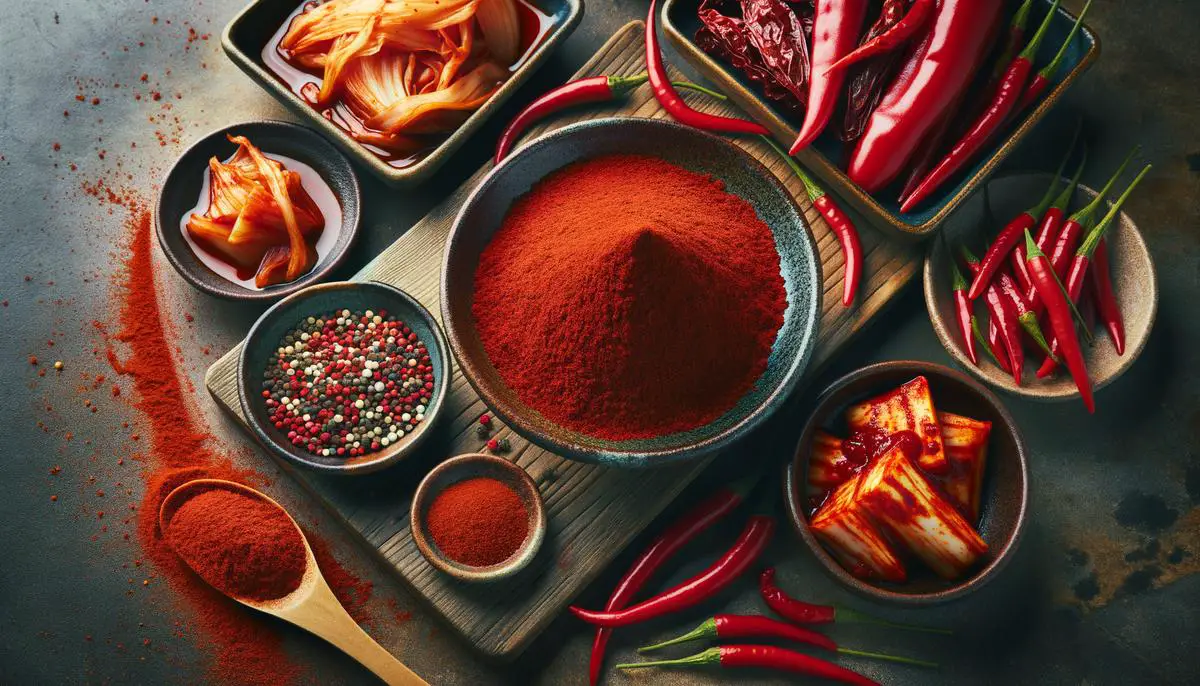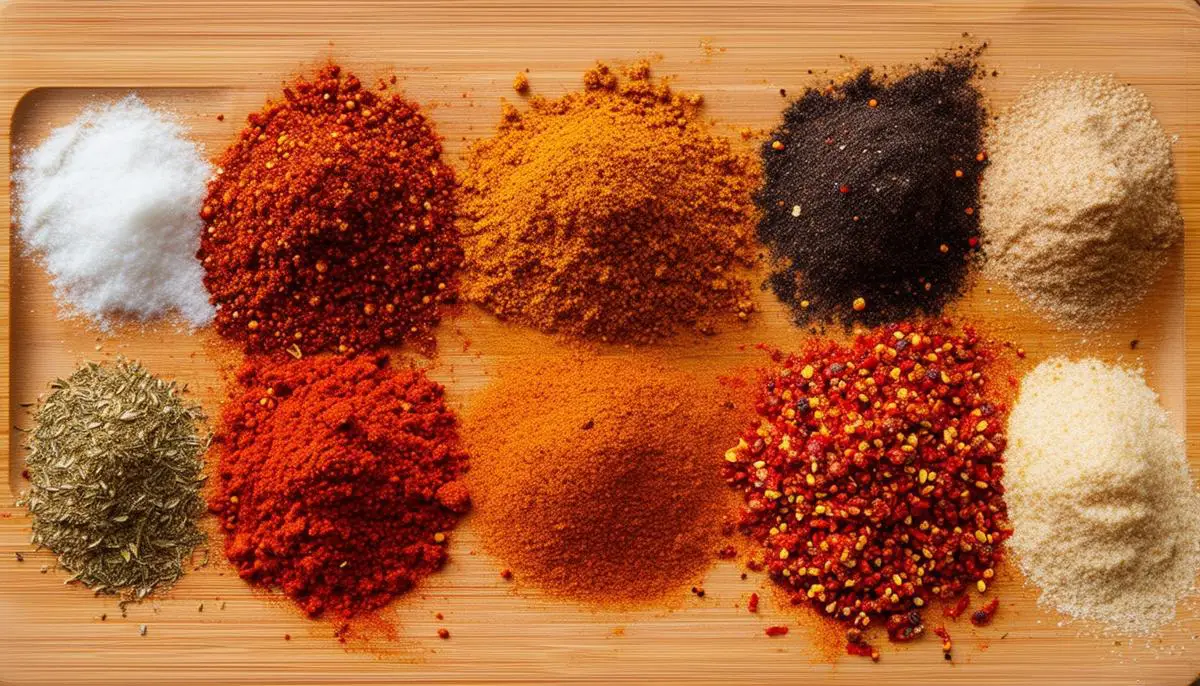
Origins and Production
Gochugaru, or Korean red chili powder, originates from a deep-seated tradition of pepper cultivation and spice production in Korea. The development of gochugaru involves a careful process that begins with the selection of sun-dried red chili peppers primarily from regions like Gyeonggi-do. In this province, the climate and soil composition cultivate peppers with the right balance of spiciness and sweetness essential for creating authentic gochugaru.
The sun-drying method used in these regions is a cultural heritage passed down through generations. By exposing the peppers to the sun, they lose moisture which concentrates their flavor while gaining a slight smokiness. This traditional technique imbues gochugaru with its unique flavor profile, distinguishing it from other chili powders around the globe.
After the drying process, the next step involves removing the stems and seeds to further reduce the heat level. The deseeded and destemmed peppers are then ground to achieve the ideal coarseness, which is crucial for its application in Korean cooking. This particular texture allows the gochugaru to blend harmoniously into dishes, giving them a characteristic deep red hue and a flavor that is spicy and subtly fruity.
Regional variations exist within Korea, where different areas might use distinct strains of peppers or slightly alter the drying method, contributing to a richer tapestry of flavor profiles across different batches of gochugaru. Some artisanal producers might opt for a slower drying process under milder sun conditions to enhance the peppers' natural sweetness, crafting a gochugaru that leans towards a more subtle heat profile suitable for dishes needing a gentler spice.

Culinary Uses and Benefits
Gochugaru's smoky-sweet and mildly fiery flavor makes it an indispensable component in the Korean kitchen, elevating the taste complexity of traditional dishes. It is famously used in kimchi, Korea's national dish of fermented vegetables, giving it an appetizing tint and fiery kick. The spice not only helps beneficial lactobacilli bacteria thrive but also melds with the tangy and umami flavors of the fermentation.1
Gochugaru is also popular in tteokbokki, a beloved street food consisting of chewy rice cakes and fish cakes in a vibrant, thick sauce. The powder adds depth and warmth that teases and pleases the palate, ensuring every spoonful carries a captivating heat and complexity.
Apart from its dominant presence in fiery preparations, gochugaru is utilized in marinades and dipping sauces, imparting mild smokiness and vivid coloring, making dishes visually appealing and aromatic. This versatility explains the spice's staple status in Korean food preparation.
Beyond its culinary role, gochugaru offers nutritional advantages. The sun-drying process preserves vital nutrients like Vitamin A, essential for vision health, immune function, and skin integrity. The capsaicin in gochugaru has anti-inflammatory and antioxidative properties, benefiting cardiovascular health and weight management.2
Rich in iron and dietary fiber, moderate consumption of gochugaru promotes good blood circulation and enhances digestive health. It transcends kitchen fame to embrace accolades for enhancing well-being, subtly weaving itself into Korean cuisine as a staple spice and a supportive pillar of health.

Substitutes and Comparisons
When gochugaru is not readily available, comparable substitutes can be used without compromising too much on authentic taste and texture. Valuable alternatives include:
- Aleppo pepper: It has a rich, tangy flavor with moderate heat and a hint of raisiny sweetness. It is coarser than fine gochugaru but milder in spiciness. When substituting for gochugaru, Aleppo pepper provides a suitable compromise, even though it somewhat lacks that characteristic smokiness.
- Crushed red pepper flakes: These flakes are an accessible option globally. They originate from various dried red peppers, typically bearing a sharper, more inconsistent heat compared to gochugaru's steady warmth. Their texture is coarser, introducing a crunchy bite. To better mimic gochugaru's effect, you might opt to grind these flakes to attain a finer consistency.
- Ancho chili powder: Made from dried poblano peppers, it offers a mild to medium heat with earthy sweet notes. Its complex layers can underpin rather than dominate a dish's primary notes when used as a substitute. However, ancho's mellow blaze must be delicately balanced to approach gochugaru's lively spirit in traditional recipes.
When adjusting recipes to substitute gochugaru, begin by employing smaller amounts than specified. Each substitute carries intrinsic peculiarities, so calibration according to individual taste and respect for textural implications is prudent. Slowly building up spice levels ensures you embrace the authentic spirit of your culinary quest without overwhelming the dish's flavor profiles.

In conclusion, gochugaru is an essential thread in the fabric of Korean gastronomy. Its distinct flavor profile, born from traditional production methods and regional nuances, makes it indispensable in many beloved Korean dishes, offering a blend of smokiness and just the right amount of heat. From the fiery depths of tteokbokki to the fermented tang of kimchi, gochugaru's presence is a testament to its versatility and cultural significance. As we explore the world of Korean cuisine, understanding and appreciating the role of gochugaru is key to unlocking the authentic flavors that have captivated palates across the globe.
- Park KY, Jeong JK, Lee YE, Daily JW 3rd. Health benefits of kimchi (Korean fermented vegetables) as a probiotic food. J Med Food. 2014;17(1):6-20.
- Sanati S, Razavi BM, Hosseinzadeh H. A review of the effects of Capsicum annuum L. and its constituent, capsaicin, in metabolic syndrome. Iran J Basic Med Sci. 2018;21(5):439-448.



